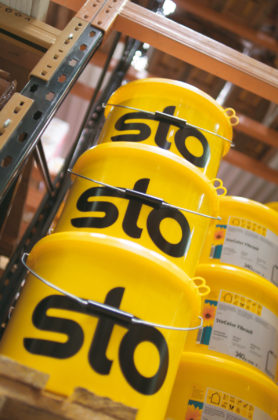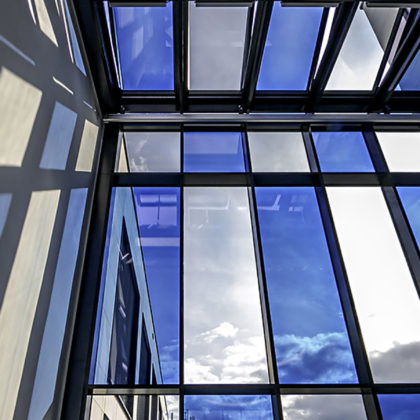Eco-friendly plasters regulate room humidity
In terms of being able to absorb moisture from the air and release it again, the StoCalce Functio mineral regulating plaster system even surpasses loam plasters by over 50 per cent. It forms the basis of a scientifically tested lime product system which is proven to improve the ambient interior climate of new and existing buildings thanks to its natural components.
Plasters and interior paints should be free from preservatives and should ensure a healthy ambient interior climate by absorbing humidity, storing it temporarily, and releasing it again quickly when the room is ventilated. The StoCalce Functio range fulfils these requirements perfectly. The key components of the highly functional lime plaster range are the StoLevell Calce RP regulating base coat, the StoLevell Calce FS filler, and various finishing plasters (StoCalce Activ). These interior products, which were developed by the Swiss Federal Laboratories for Materials Science and Technology (Empa) in conjunction with the construction material specialist Sto, combine the positive properties of lime and loam. They absorb twice as much moisture as standard lime products and over 50 per cent more than the lime plasters typically available on the market. Furthermore, the eco-friendly materials are water-resistant and abrasion-resistant and are just as easy to apply – and rework – as standard lime plasters.
As part of a research project into the refurbishment of old buildings, the Zurich Empa institute worked on the development of a moisture-absorbing plaster system with the aim of improving significantly on the best results achieved by existing products. The work produced the StoLevell Calce RP base coat, which is based on a hydraulic binding agent and lime hydrate, and the StoLevell Calce FS interior filler. The institute then went on to investigate finishing coats. These coats affect the sorption characteristics of the base coats and must therefore be tailored precisely to their properties. Furthermore, their diffusion resistance needs to be as low as possible.
In addition to the highly functional products, this product range also includes lime and silicate paints, sophisticated marble polished plaster, as well as mineral-based finishing plasters. The range can be used to create a variety of surface designs and shows how a few simple measures (plastering work) can positively influence the climate of a room – in both new and existing buildings. Problems with condensing moisture can be prevented successfully and fluctuations in humidity can be significantly reduced.
 |
Nordtest, 24-hour cycle. Comparison of the two loam plasters with the moisture-absorbing plaster.
Image: Empa, Zurich
|
||
 |
Measuring the maximum moisture absorption: after around 24 hours, the loam plaster (99 g/m2) and the gypsum lime plaster (52 g/m2) have reached their saturation limit, but the moisture-absorbing plaster is still not saturated even after 144 hours (203 g/m2).
Image: Empa, Zurich
|
||
 |
Magnified 5000 times, the scanning electron microscope image shows the porous coating film which results in good water vapour permeability, for both the lime paint (top) and the silicate emulsion paint.
Image: Empa, Zurich
|
||
 |
The products from the StoCalce Functio range are just as easy to apply as commonly available lime plasters.
Photo: M. Duckek, Ulm / Sto SE & Co. KGaA
|
||
 |
The mineral regulating plaster system combines maximum functionality with sophisticated surfaces for the bathroom, bedroom, or living room.
Photos: M. Duckek, Ulm / Sto SE & Co. KGaA
|
||
 |
The mineral regulating plaster system combines maximum functionality with sophisticated surfaces for the bathroom, bedroom, or living room.
Photos: M. Duckek, Ulm / Sto SE & Co. KGaA
|
||
 |
The mineral regulating plaster system combines maximum functionality with sophisticated surfaces for the bathroom, bedroom, or living room.
Photos: M. Duckek, Ulm / Sto SE & Co. KGaA
|
||
Publication free of charge, specimen copy requested



